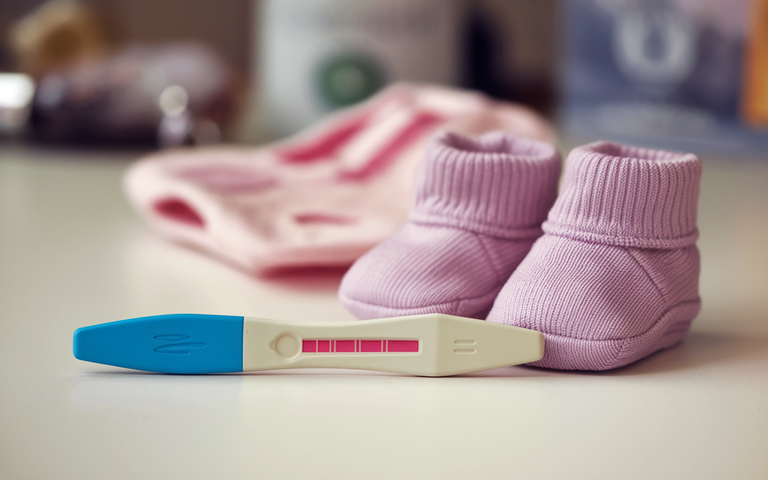Charting course to parenthood: Your rapid guide to fertility and pregnancy testing

Starting the journey to parenthood can bring a mix of emotions: hope, excitement, and sometimes uncertainty. For some, conceiving happens naturally, while for others, it raises questions that can be daunting.
If you’re beginning to wonder about your fertility, knowing where to start can feel like the biggest hurdle.
Fertility can seem complex, but it begins with understanding your own body, how it works, when it’s ready, and where potential challenges might lie.
This is where at-home fertility tests offer a reassuring first step. Simple tools to track ovulation or assess sperm health help you gain valuable insights from the privacy of your own home.
Whether you’re just starting to plan or have been trying for a while, taking the first step towards understanding your fertility can make all the difference. These tests aren’t just about numbers. They’re about knowledge, confidence, and feeling empowered on your path to parenthood.
Understanding the foundation of your fertility

Before conception can happen, it helps to understand the basics of fertility, how your body works and what factors might affect your chances.
It goes without saying that both partners play an important role. Knowing where you stand can bring clarity and confidence.
For women, understanding ovulation is a key part of the puzzle. Tracking when you ovulate helps pinpoint your most fertile days each month. For men, sperm count and overall sperm health are just as important in shaping fertility potential.
The first step is often about gathering information, and that’s where at-home fertility tests can offer some reassuring insights. These simple self-tests provide a straightforward, private way to start learning about your body’s natural rhythms, giving you insights that can help guide your next steps.
The power of knowing: Why consider fertility testing?
The journey to parenthood is personal, and understanding your own body is a significant part. Fertility testing, especially in its rapid, at-home format, offers several benefits:
- Convenience and privacy: Let's face it, life is busy! At-home fertility tests eliminate the need for time-consuming appointments and travel. You can take the first steps in understanding your fertility in the comfort and privacy of your own home, at a time that suits you. This discretion can be particularly valuable as you begin to explore your options.
- Early insights: Waiting can be one of the hardest parts when you’re hoping to conceive. Rapid fertility testing provides quick results, giving you answers sooner rather than later. This early information can help you feel more in control and informed as you plan your next steps.
- Empowerment through knowledge: Understanding your body's natural cycles and indicators of fertility is empowering. Whether it's tracking ovulation or checking sperm count, knowledge is a powerful tool. At-home fertility tests put this knowledge directly into your hands, allowing you to take a proactive role in your fertility journey.
- A stepping stone: Consider at-home fertility tests a helpful first step. They can provide valuable baseline information that can guide further conversations and decisions. They can help you identify if further exploration might be beneficial, allowing for more informed discussions as you move forward.
Types of rapid fertility tests available

The world of fertility testing can seem complex, but at-home fertility tests simplify the process, making it more accessible and less daunting. Let’s look at some of the key types of tests available.
Ovulation tracking
For women, understanding the ovulation cycle is fundamental to conception. Ovulation tracking helps pinpoint when ovulation occurs, identifying the most fertile window each month.
At-home ovulation tests, often in the form of strips, detect the surge in luteinising hormone (LH) that happens just before ovulation.
- How they work: These tests are typically urine-based and are designed to be used daily around the middle of your cycle. A clear result indicates the LH surge, signalling that ovulation is likely to occur in the next 24-36 hours – the optimal time for trying to conceive.
- Benefits of at-home ovulation tracking: Ovulation tracking at home provides a convenient and cost-effective way to understand your cycle.
It removes the guesswork and helps you time intercourse effectively to maximise your chances of conception each month. Regular fertility tracker use, such as ovulation tests, can help you become more attuned to your body's natural rhythms.
Male fertility tests and sperm health
Fertility is a partnership, and understanding male fertility is just as important. Male fertility tests focus on analysing aspects of semen, primarily sperm count and sperm health. These tests are designed to indicate a man's fertility potential from the comfort of home.
- What they measure: At-home male fertility tests typically assess sperm count, which is sperm concentration in semen. Some tests may also provide insights into other aspects of sperm health, such as motility (how well sperm move).
- Why consider a male fertility test? Male fertility tests offer a discreet and accessible way for men to take an active role in their fertility journey. Understanding sperm count can be a key puzzle piece when trying to conceive. If results indicate a lower-than-expected sperm count, it can prompt further exploration and informed conversations about next steps.
Pregnancy tests: A moment of anticipation
While not strictly a fertility test, the pregnancy test is undeniably a central part of the journey to parenthood. Early detection pregnancy tests are designed to detect the hormone hCG (human chorionic gonadotropin) in urine, which is produced after implantation.
- How early can they detect pregnancy? Modern pregnancy tests are highly sensitive and can often detect pregnancy as early as a few days before a missed period. However, for the most accurate results, it's generally recommended to test on the day of your expected period or shortly after.
- The ease of at-home pregnancy tests: At-home pregnancy tests are incredibly user-friendly and provide rapid results within minutes. This accessibility and speed can be a great comfort during an anxious time, offering quick answers in the privacy of your own home.
Taking the first step

For many couples hoping to conceive, the journey can feel overwhelming. Where do you even begin? Self-testing, using at-home fertility tests, can be a reassuring and informative first step.
We encourage you to consider self-testing as a way to start understanding your fertility landscape.
It's about empowering yourself with knowledge and taking a proactive role in your journey. Think of it as gathering valuable information that can help guide your next steps, whatever they may be.
At-home fertility tests are not intended to replace conversations with healthcare professionals, but they can be a valuable tool in your personal journey. They provide a convenient, private, and rapid way to gain initial insights into key fertility indicators like ovulation tracking, sperm count, and sperm health.
Moving forward with hope and information
The path to parenthood is unique for everyone. Whether you are just starting to think about conceiving or have been trying for a while, understanding your fertility is a decisive step forward. Rapid fertility testing provides accessible and convenient tools to help you on your way.
By embracing at-home fertility tests, you are choosing to be informed, proactive, and empowered on your journey to creating or expanding your family.
Remember, knowledge is a source of strength, and taking that first step to understand your fertility can bring you closer to your hope of parenthood.


